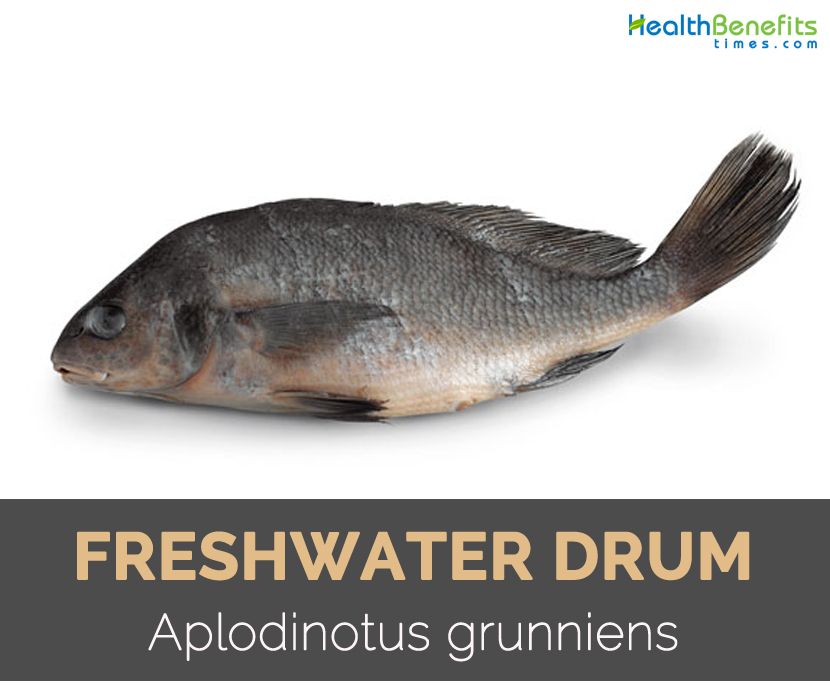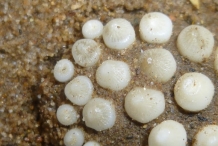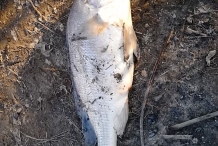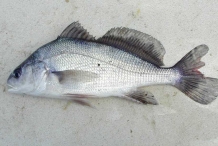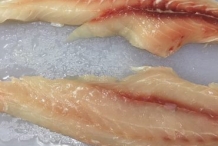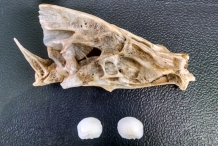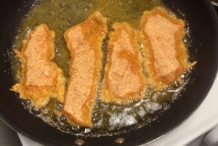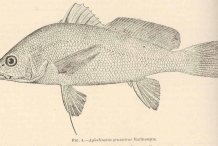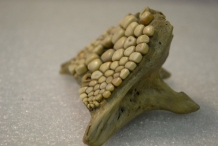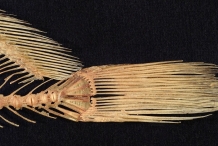Typically, drum weighs 2.3–6.8 kg (5–15 lb). The world record made by drum weighs 54 lb 8 oz (24.7 kg) which was caught on Nickajack Lake in Tennessee. Freshwater drum is silvery or gray in turbid waters and in clearer waters, they are more bronze and brown colored. The fish is deep bodied having divided dorsal fins that consist of 29-32 rays and 10 spines. It has a wide distribution range extending from as far north as The Hudson Bay to extreme Southern range in Rio Usumacinata Basin of Guatemala. They could be found as far east as western banks of the Appalachian Mountain range in eastern U.S. and extends as far west as Texas, Kansas and Oklahoma. In North America, it is considered to be the most wide ranging species of fish.
It occurs in bottoms of large to medium rivers and lakes. An adults feed on aquatic insect immature such as amphipods, mayflies, crayfish, fish and mollusks. Drum of larval stages eats larvae of other fishes and young fishes consumes zooplankton. The fish prefers clear water but is also tolerant to turbid and murky water. It prefers bottom to be clean sand or gravel substrates. The lateral line on freshwater drum extends to end of its tail is a visible line of sense organs on the side of a fish that detects pressure and vibration. The adaptation allows the fish to pick up vibrations in water and also to locate enemies or food.
Appearance
It has distinctive appearance with silver colored, deep bodied fish which are laterally compressed. The lateral line extends to their rounded caudal fin which is an unusual characteristic. The long dorsal fin is relative to its total length which possesses a deep notch. It has sub terminal mouth having blunt rounded snout. Scales are ctenoid and lateral line scales ranges from 49 to 53. The anal fin contains two spines and seven soft rays.
Habitat and Ecology
The fish occurs in large silty lakes and medium to large rivers mostly in open water over mud bottom. It spawns in open water, far from shore. Eggs float at the surface.
Feeding
Adults feed on aquatic insects such as mayflies, mollusks and small fish. At early larval stage, it feeds on the larval stages of other fishes. When reached 12 mm, it feeds on zooplankton. Juveniles feed on larval stages of caddisflies and mayflies. The drum has heavy teeth behind their mouth or in their thoat which assist in the consumption of snails and zebra mussel.
Lifecycle
Its life begins at the moment when female’s egg is fertilized by male. After 9 to 96 hours, the fertilized eggs hatch. When hatching, larvae are 3 mm and remains at the surface for 3 days or till it become capable to swim on its own. Then it proceeds to move into deeper waters and feeding. It is considered juveniles at 15 mm. During their first year, it reaches 85 mm long and reaches to the size of 150 mm the next. The size varies which is based on the availability of food and habitat. Sexes are not dimorphic.
Reproduction
Seasonally, it breeds in open water. The fertilized eggs float near the water surface where the eggs and larvae are carried by currents. They are promiscuous because females or males disperse eggs or sperm into the water column where the fertilization becomes random.
Generally males reach to the maturity at the age of four and female reaches maturity at the age of five or six. Usually between May and June, when the temperature of water reaches 20° C the spawning takes place. Within the water column, the fish spawn. Female produces from 40,000 to 60,000 ova. The fertilized eggs float near the water surface for 2 to 4 days before hatching. Larvae remains attached to the surface film till it obtains enough muscle strength to swim in deeper water. Usually, it requires three more days. In young fish, growth is rapid which slows down with age.
Other Facts
- Large otoliths are used as necklaces or bracelets by Native Americans.
- Ototliths in an inner ear could be an inch in diameter in Freshwater drum. It helps the fish to remain balanced and oriented in murky water.
- Eggs float on the surface of water till it hatches. Sometimes, it travels for miles on windswept lakes or rivers before newly hatched fish emerges.
- In North America, it is the only member of its family which occurs completely in freshwater habitats.
References:
https://www.itis.gov/servlet/SingleRpt/SingleRpt?search_topic=TSN&search_value=169364#null
https://www.nps.gov/miss/learn/nature/freshwater-drum-sheepshead-aplodinotus-grunniens.htm
https://en.wikipedia.org/wiki/Freshwater_drum
Comments
| Freshwater drum Quick Facts | |
|---|---|
| Name: | Freshwater drum |
| Scientific Name: | Aplodinotus grunniens |
| Origin | Native to North and Central America |
| Colors | Silver |
| Shapes | Compressed, up to 0.91 m |
| Calories | 236 Kcal./cup |
| Major nutrients | Vitamin B-12 (148.33%) Isoleucine (95.39%) Lysine (95.10%) Tryptophan (88.18%) Threonine (86.25%) |
| Name | Freshwater drum |
|---|---|
| Scientific Name | Aplodinotus grunniens |
| Native | Native to North and Central America |
| Common/English Name | Shepherd’s pie, Perch, Gray bass, Silver bass, Gasper goo, Gaspergou, Gou, Grunter, Grunt, Grinder, Croaker, Wuss fish, Sheephead, Sheepshead |
| Name in Other Languages | English: freshwater drum, Sheephead, Sheepshead; Danish: Flodtrommefisk; French: malachigan; German: Flusstrommler, Süßwasser-Trommelfisch; Mandarin Chinese: Dànshuǐ shíshǒuyú (淡水石首魚), Dànshuǐ shí shǒu yú (淡水石首鱼); Russian: barabanshchik rechnoy (барабанщик речной), barabanshch (барабанщ), barabanshchik rechnoy (барабанщик речной); Spanish: Roncador de agau dulce, roncador de agua dulce; Swedish: Flodtrumfisk |
| Body shape & size | Compressed, up to 0.91 m |
| Body color | Silver |
| Weight | 24 kg (55 pounds) |
| Major Nutritions | Vitamin B-12 (Cobalamine) 3.56 µg (148.33%) Isoleucine 1.595 g (95.39%) Lysine 3.18 g (95.10%) Tryptophan 0.388 g (88.18%) Threonine 1.518 g (86.25%) Valine 1.785 g (84.52%) Histidine 1.019 g (82.71%) Leucine 2.815 g (76.16%) Protein 34.63 g (69.26%) Manganese, Mn 1.381 mg (60.04%) |
| Calories in 1 fillet (154 g) | 236 Kcal. |


